Last year I noticed that we seemed to improve our thinking about literature after I had introduced the children to the idea of figurative language, in particular, the idea of metaphor. After some practice, we began to see how authors used metaphors or other comparative devices of one sort or the other — symbols, similes, analogies, personification — to convey meaning. I wrote about our exploration of a particular image in the graphic novel, The Arrival, and our playing with metaphor in Valerie Worth’s poem, fence.
In the past, I’ve introduced figurative language later in the year as we gear up for a unit or two on poetry. When I start fifth grade this year I plan to introduce the idea of metaphor (or, more generally, comparison) earlier, maybe even in the first week, so we can use these idea to talk and think about texts over the course of the year. At its root I believe figurative language is about playfulness. And that’s the point I really want to make from the get-go next year.
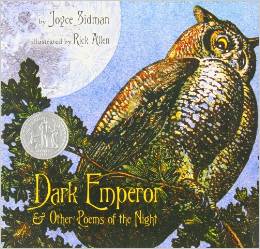 Last year we enjoyed Joyce Sidman’s poetry, in particular her book Dark Emperor. Her poetry offers a playfulness with language, a delightful use of personification, and a serious number of wonderful metaphors to feel, study, and talk about. I wanted more.
Last year we enjoyed Joyce Sidman’s poetry, in particular her book Dark Emperor. Her poetry offers a playfulness with language, a delightful use of personification, and a serious number of wonderful metaphors to feel, study, and talk about. I wanted more.
Earlier this summer I ordered a whole bunch more of Sidman’s poetry books. They just arrived.
 One new book would be perfect for an early-in-the-year introduction to figurative language (and playfulness in general.) That book is Red Sings from Treetops: a year in colors. Gorgeously illustrated by Pamela Zagarenski, Sidman’s poetry explores how colors, even the meaning of colors, changes over the course of the year.
One new book would be perfect for an early-in-the-year introduction to figurative language (and playfulness in general.) That book is Red Sings from Treetops: a year in colors. Gorgeously illustrated by Pamela Zagarenski, Sidman’s poetry explores how colors, even the meaning of colors, changes over the course of the year.
Using the language of colors (green, red, purple, white…) Sidman’s writing invites the reader to see these ordinary words in new ways, as creatures with their own lives. A rich emotional landscape emerges from her play.
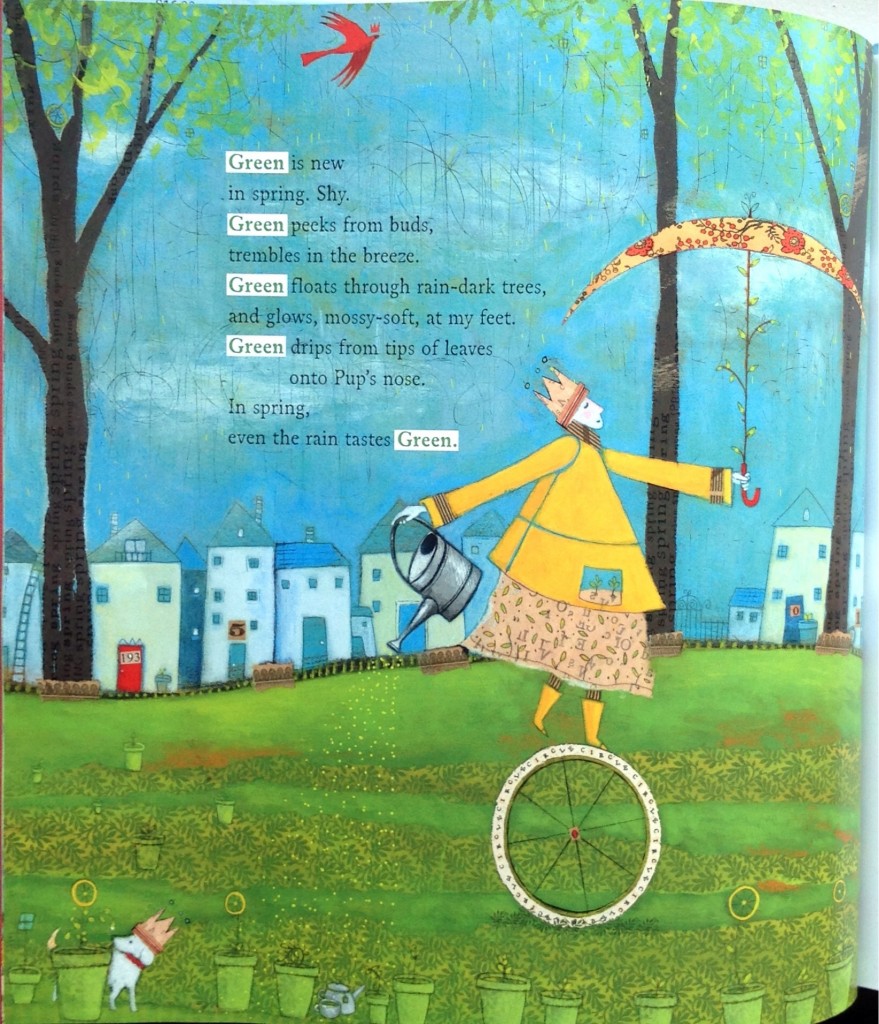
A book of poems like that would be good enough. But in Red Sings perspective is also important. Can you imagine introducing the concept of perspective by exploring how the meaning of colors change depending on the season they are experienced? How does green look or feel in the fall?
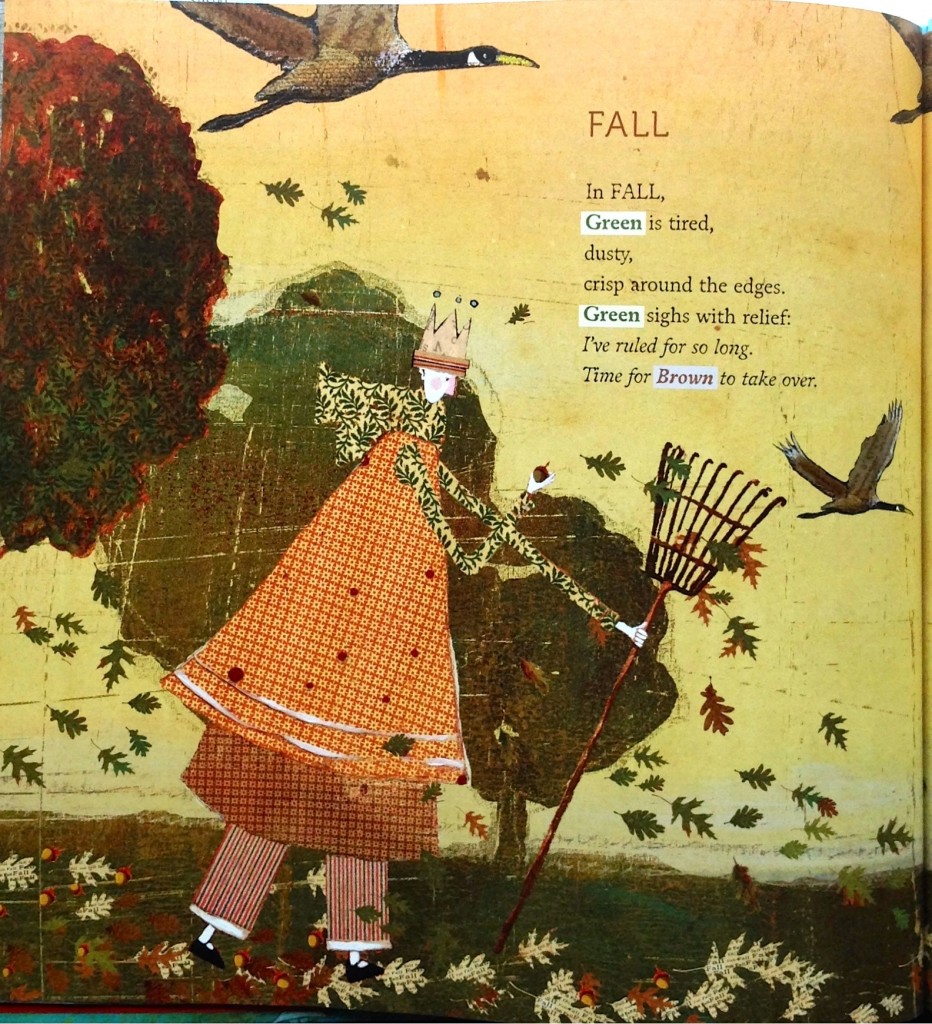
Of course, often my favorite color-explorations are those that lie in the shadows. Chiaroscuro describes my perspective on life.
The darkness.
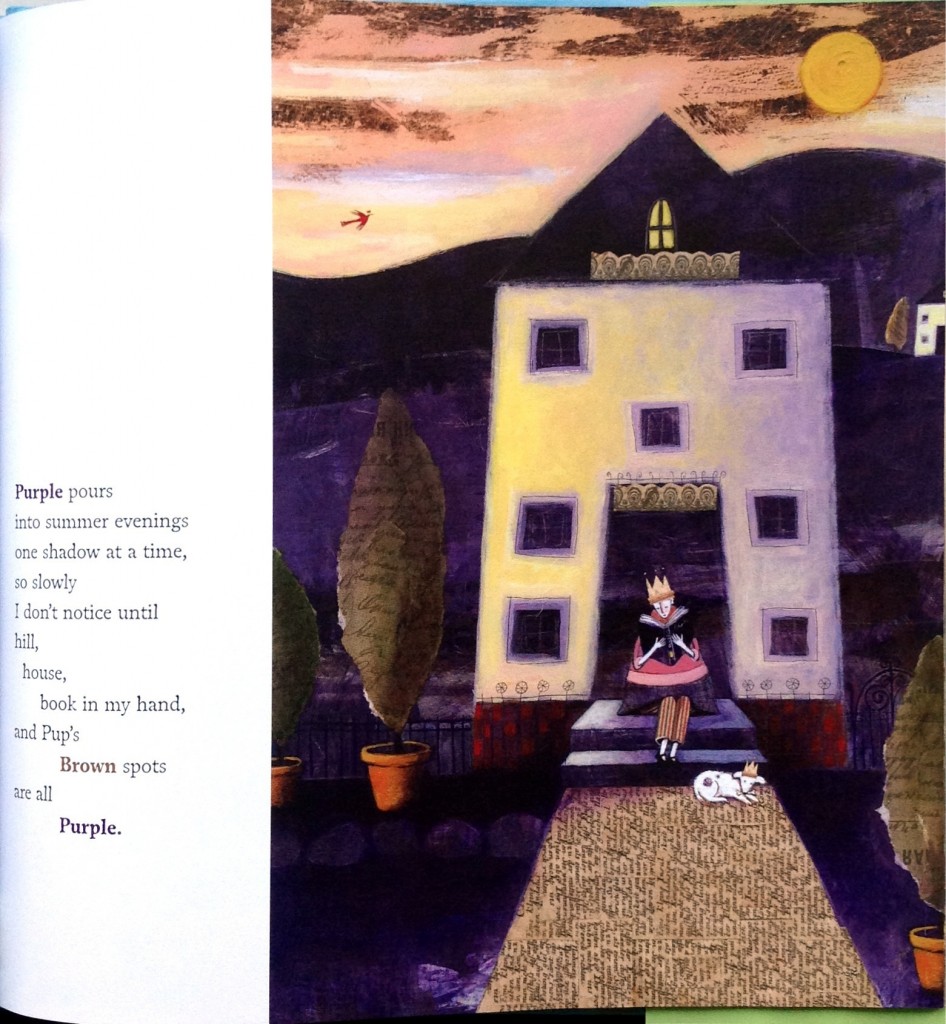
And the light.
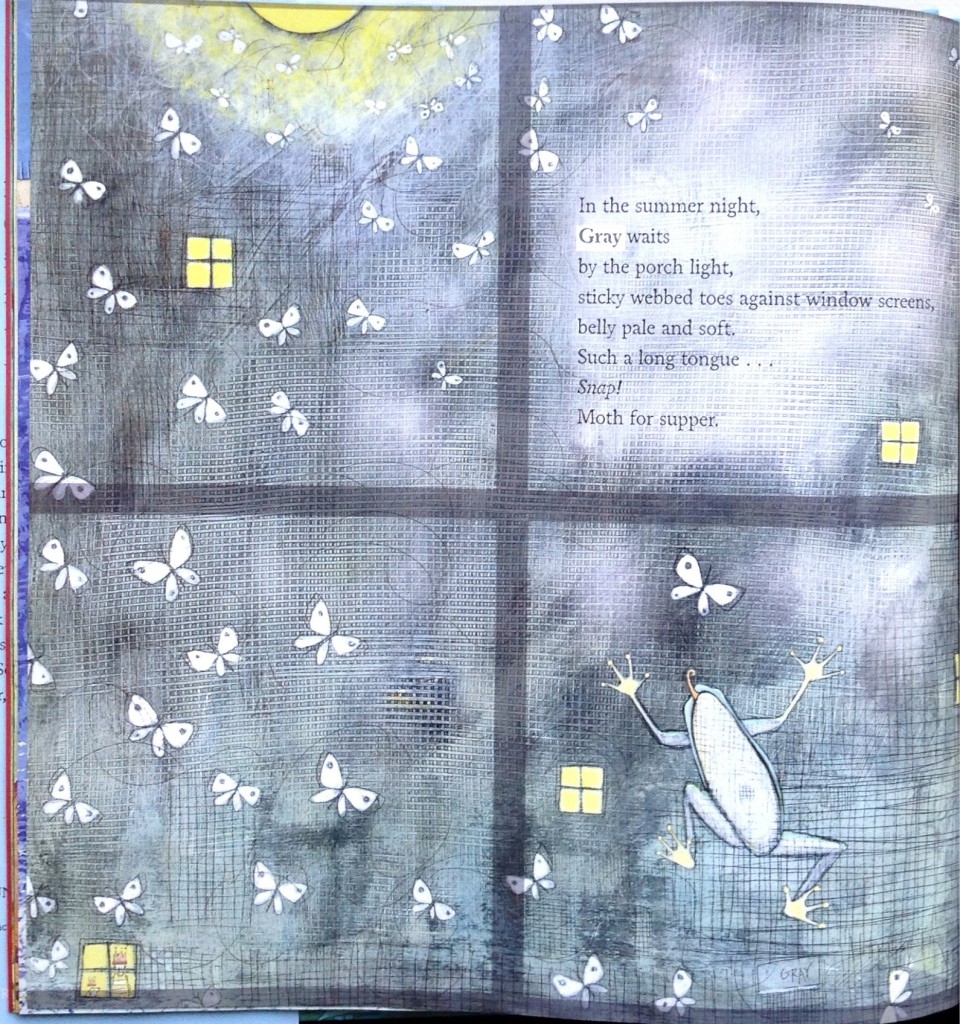
Red Sings is packed with poems that not only invite the reader to think about color in new ways, but to see how color (green, for instance) has different meanings when seen from different perspectives. Awesome.
All this fits with some other reading I’ve been doing on how we learn. Work by Daniel Willingham, Daniel Kahneman, Peter Brown, et al, and a book I’m reading now (A More Beautiful Question) all connect learning to the learner’s active manipulation of new information. To learn well, a learner has to engage her mind in a quest of some sort, often to answer a question or explain something puzzling or incongruous. This quest requires the learner to pick up and examine the new information with an open and searching mind; to have both the time and the inclination to play and to experiment; to connect and compare new information with other things she has learned or thought she knew; to ask the big questions that emerge from curiosity and interest: Why?/What If?/How?
I can’t think of a better way to begin that process of playful questioning than to experience how writers play with language, how they pick up and examine common words (like colors) and ideas like the seasons we have all experienced in order to arrive at fresh ideas about things that we thought were so familiar.

I love it when my thinking is confirmed by a really smart thinker like you! My anchor chart of “ways to compare and describe” (simile, metaphor, idiom, hyperbole) is already hanging when the kids walk in the door. Those terms are part of our conversations all year long. And I think it pays off big-time.
And how about A MORE BEAUTIFUL QUESTION? Great book, eh? We read parts of it at the Choice Literacy writing retreat and then I came home and finished it in a gulp. Brenda (CL editor) asked us to share our beautiful question. Mine is metaphorical and I accidentally (subconsciously?) used my One Little Word: Today will I focus on breathing out, or breathing in?
What is your beautiful question?
Mary Lee, It is so cool that you start with figurative language (and go beyond just naming it!) You’re an inspiration!
I DO think that comparison is so important (maybe even the most important??) way into something. It starts with noticing, a lingering in the moment of observation, and then moves on to making some initial judgments based on something else we noticed…(Like this. Not like that.) Metaphor (and analogy, etc.) may even add another layer of thought because it goes beyond the surface noticing; it pushes toward seeing beneath the surface. At least that’s what I’m thinking…
My beautiful question for the next year or so comes from thinking about my father’s movement through the stages of pulmonary fibrosis and is, perhaps, a bit too personal(?): How can I help to create beauty?
I’m reminded here of a lesson I did with a group of 6th graders this year where I’d completely underestimated their ability to think figuratively—I think because all that had ever been asked of them was to identify figurative language, not think about what it could mean. I suggested to the teacher that she try out a book like Migrant by Maxine Trottier (with great illustrations by Isabelle Arsenault) to help them think more deeply. It’s about a migrant girl whose feelings and experiences are expressed figuratively. I don’t know if she ever did, but it seemed sad to me that kids could get up to 6th grade without the fun and joy of thinking metaphorically—which I’m sure they did automatically when they were younger. We just beat it out of them.
But guess I need to add A More Beautiful Question to the stack on my nightstand. It sounds like something I need to read.
Vicki, I am really looking forward to seeing what you come up with as you write your new book. I love your combination of practical, thoughtful knowledge about what happens in the classroom, and the way you take children’s thinking seriously. That’s a really nice combination that, to my mind, yields some pretty powerful insights about how I can grow.
I haven’t heard of MIGRANT, so I will have to look it up. It sounds like something that I might like to read!
A MORE BEAUTIFUL QUESTION has been fun to read. There’s some business stuff in there that I’m less interested in (but some is really interesting!) I really liked the attempt to create an anatomy of questions and the attempt to figure out the function of different types of questions. The more I think about that kind of thing, the more I understand (and can change) my own questioning. I also got introduced to the blog of THE RIGHT QUESTION INSTITUTE, which I’d never heard of before. Very cool stuff. I loved the history of how the blog started out, and how the founders were interested in solving problems that patients had with medical institutions and parents had with schools. Worth checking out if you haven’t seen it before.
http://rightquestion.org/
Just finished Atul Gawande’s THE CHECKLIST MANIFESTO, which is really rattling around in my brain. I need to write about it so I can do something with those ideas. Have you read it?